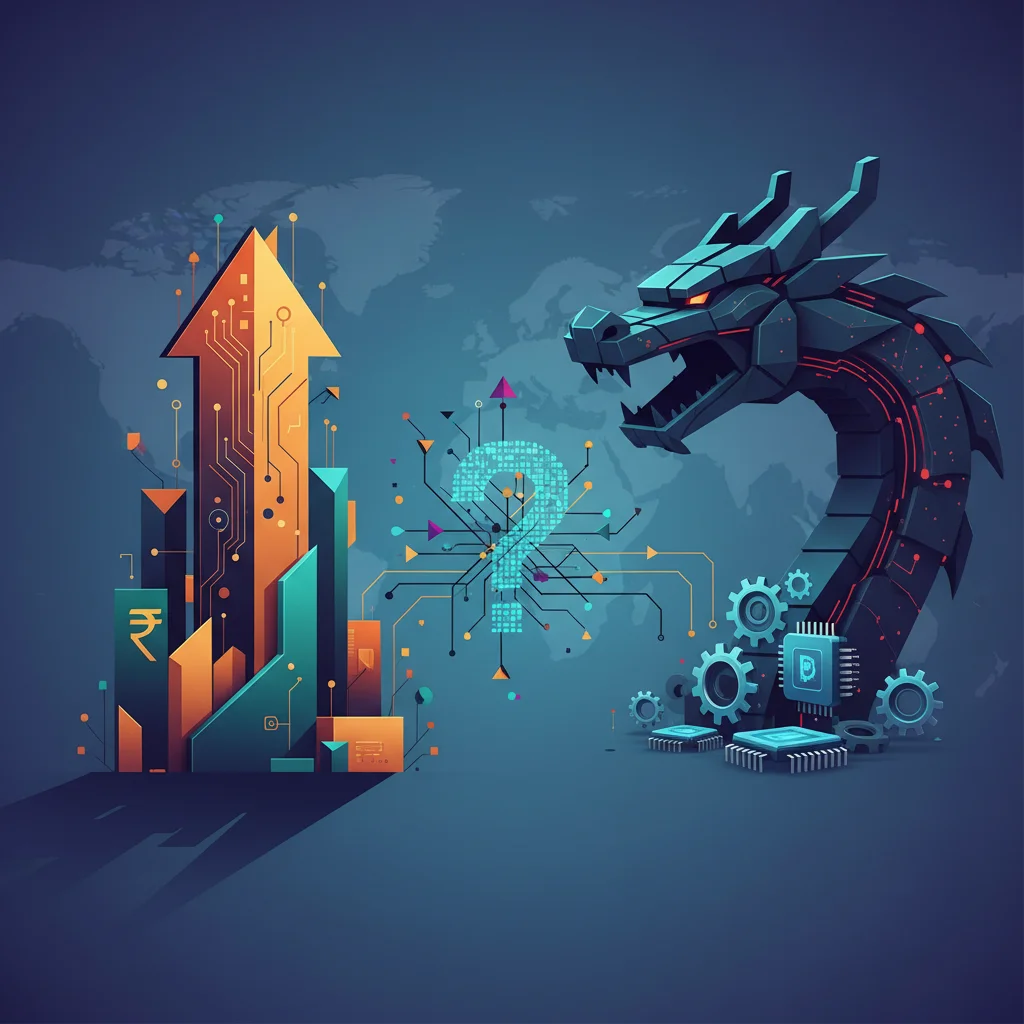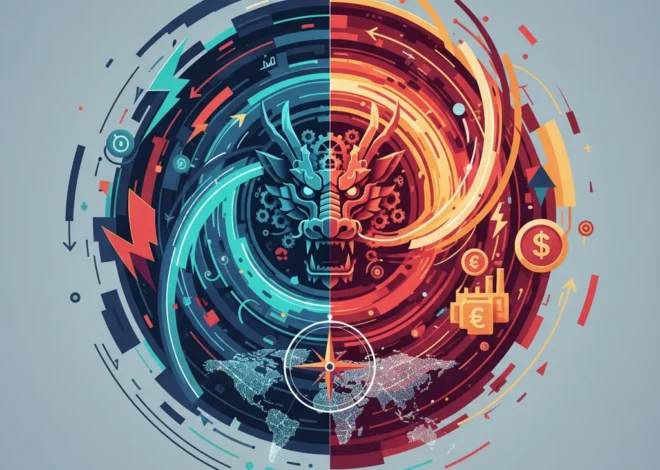
India’s Trillion-Dollar Tech Dilemma: Can It Innovate Its Way Out of China’s Shadow?
The Paradox of a Rising Superpower
India stands at a pivotal moment in its economic history. With a rapidly growing economy, a burgeoning middle class, and ambitions to become a global manufacturing powerhouse, the nation’s trajectory seems aimed squarely at the stars. Yet, a stark warning from one of its most influential industrialists, JSW Group Chairman Sajjan Jindal, reveals a critical vulnerability lurking beneath the surface: a deep and growing reliance on Chinese technology. This dependency, born from what Jindal calls “shoestring” research and development budgets, threatens to undermine the very foundation of India’s long-term economic aspirations. For investors, business leaders, and anyone with a stake in the global economy, this isn’t just a domestic issue—it’s a geopolitical and financial fault line with far-reaching implications.
Jindal’s cautionary words are not abstract; they are rooted in his own company’s strategic pivot into the electric vehicle (EV) market. As JSW Group prepares to launch its own EV brand, it finds itself in a classic bind: to compete, it must source critical components, like advanced battery cells, from China. This highlights a national paradox: even as India promotes its “Make in India” initiative to bolster domestic manufacturing, the intellectual property and core innovation behind many of its most advanced products are being imported. This raises a fundamental question about the nature of economic power in the 21st century: can a nation truly lead if it only assembles the future, rather than designing it?
A Tale of Two Budgets: The Glaring R&D Gap
The core of the problem lies in the numbers, and they paint a sobering picture. For decades, India’s investment in research and development has lagged significantly behind its global peers and economic rivals. While policymakers have focused on improving the ease of doing business and attracting manufacturing, the foundational pillar of innovation has been comparatively neglected. This disparity in financial commitment directly impacts a nation’s ability to create proprietary technology, foster high-skilled jobs, and capture the most valuable parts of the global supply chain.
To understand the scale of this challenge, consider the following comparison of R&D expenditure as a percentage of Gross Domestic Product (GDP).
| Country/Region | R&D Spending (% of GDP) | Implication |
|---|---|---|
| India | ~0.7% (source) | Struggles to build a deep-tech ecosystem, leading to import dependency. |
| China | ~2.4% (source) | Aggressive investment has created global leadership in sectors like EVs, solar, and 5G. |
| United States | ~3.5% | Maintains a dominant position in software, semiconductors, and biotech. |
| OECD Average | ~2.7% (source) | Represents the benchmark for developed, innovation-led economies. |
This data reveals more than just a spending gap; it exposes a fundamental difference in economic strategy. While India has excelled in services and is now pushing manufacturing, countries like China have strategically invested billions to leapfrog from being the world’s factory to becoming its laboratory. This has profound consequences for the stock market and long-term investing. A weak domestic R&D pipeline means fewer globally competitive technology companies, limiting opportunities for investors seeking high-growth, innovation-driven returns within the Indian market.
Beyond the Battlefield: How a US-Backed Economic War on Russian Energy is Shaking Global Markets
The EV Race: A Microcosm of a Macro Challenge
The electric vehicle industry serves as the perfect case study for India’s R&D dilemma. The global transition to electric mobility is one of the most significant economic shifts of our time, with trillions of dollars in value up for grabs. India, with its massive population and pollution challenges, is a key market. The government has actively encouraged EV adoption through subsidies and incentives. However, the heart of an EV—the battery, the motor, the control software—is a product of intense and expensive R&D.
Without a robust domestic ecosystem for battery cell manufacturing and development, Indian firms are forced to look abroad, primarily to China, which dominates the global battery supply chain. This creates several risks:
- Geopolitical Vulnerability: In an era of increasing tensions between New Delhi and Beijing, over-reliance on a strategic rival for critical components is a significant national security risk. Supply chains can be weaponized, as recent global events have demonstrated.
- Economic Value Leakage: The most profitable part of the EV is the battery pack. By importing the core technology, India is essentially outsourcing the highest-value portion of its own automotive future, limiting job creation and profit retention within its borders.
- A Stifled Innovation Cycle: True innovation happens when design, engineering, and manufacturing work in a tight feedback loop. When the core R&D happens elsewhere, domestic firms are relegated to assembly and integration, slowing the development of local expertise.
This challenge extends far beyond EVs. From semiconductors and consumer electronics to advanced pharmaceuticals and even emerging fields like blockchain and financial technology, the principle remains the same. Owning the intellectual property is the ultimate driver of long-term economic wealth and stability. Initiatives like “Make in India” are vital, but they must be paired with an equally ambitious “Design and Develop in India” strategy.
The New Right Rebellion: A Tectonic Shift Poised to Reshape the Global Economy
Charting a New Course: From Assembly Line to Innovation Hub
So, what is the path forward? Overcoming this R&D deficit requires a concerted, multi-decade effort from both the public and private sectors. It’s a complex problem that touches upon finance, economics, and national policy. A comprehensive strategy must include several key pillars:
- Boosting Public Investment: The government must lead the way by significantly increasing its allocation to R&D, aiming to at least match the OECD average. This funding should be directed towards universities, national labs, and strategic high-risk, high-reward “moonshot” projects.
- Incentivizing Private Sector R&D: Beyond production-linked incentives, India needs powerful R&D-linked incentives. This could include enhanced tax credits for R&D expenditure, grants for patent filing, and policies that encourage corporations to establish world-class research centers in India.
- Deepening Capital Markets: A vibrant R&D ecosystem needs a sophisticated financial backbone. This means fostering a venture capital culture that is willing to make long-term bets on “deep tech” and hardware, not just software and fintech apps. The banking sector and capital markets must evolve to better assess and finance innovation-led projects.
- Fostering University-Industry Collaboration: Breaking down the silos between academia and industry is crucial. The world’s leading innovation hubs, from Silicon Valley to Shenzhen, are built on a seamless flow of ideas and talent between research institutions and commercial enterprises.
The journey from a “shoestring” R&D budget to a world-class innovation economy is a marathon, not a sprint. It will require patience, political will, and a fundamental shift in the nation’s economic priorities. For the trading and investing community, the companies that successfully bridge this gap—those that invest in and create their own IP—will be the long-term winners on the stock market.
The High-Stakes Calculus: Decoding the Economic Ripple Effects of the Gaza Peace Proposal
Conclusion: An Investment in the Future
Sajjan Jindal’s warning is a crucial wake-up call. India’s economic ambitions are at a crossroads. It can continue on a path of manufacturing-led growth, which, while beneficial, carries the inherent risk of technological dependency and geopolitical vulnerability. Or, it can make the difficult but necessary choice to invest heavily in the engine of all modern economies: research and development. This decision will define India’s economic narrative for the 21st century. It will determine whether the nation becomes a true peer to the world’s economic superpowers or remains a step behind, assembling a future designed elsewhere. For investors, policymakers, and business leaders, the message is clear: the most critical investment India can make today is not in factories, but in ideas.

